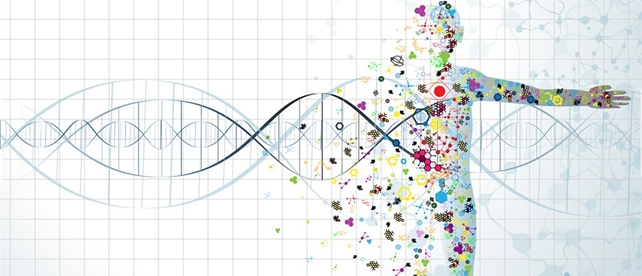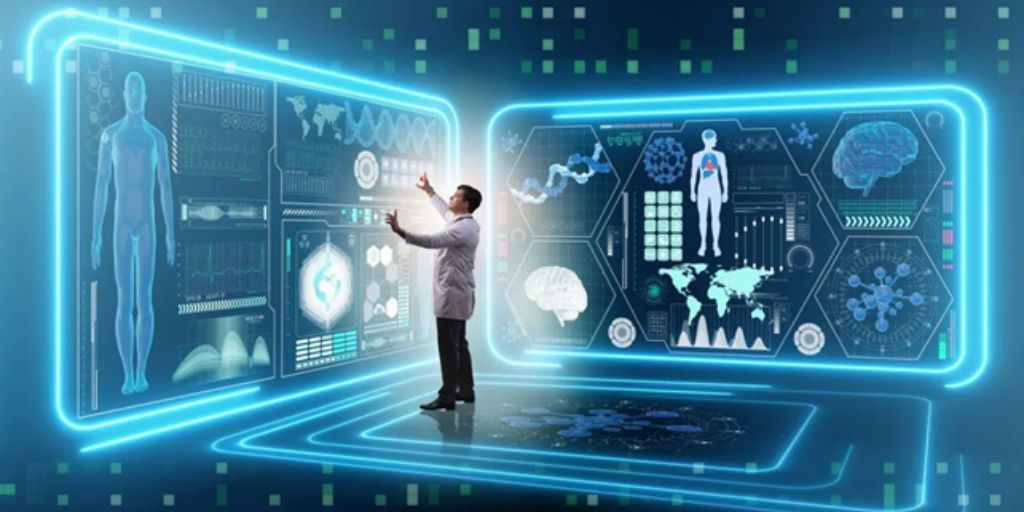
Modern medical devices, equipment, and digital solutions offer immense opportunities for both professionals and patients. They redefine the way we perceive, access, and experience healthcare. Let’s explore key HealthTech and Medtech digital strategies and approaches that imply the use of state-of-the-art software solutions.
Deciphering HealthTech and MedTech: digital strategies and impeccable equipment
Technology is intertwined with medicine, which is evident in the realms of HealthTech and MedTech. The growth strategies of clinics incorporate software solutions and state-of-the-art machinery to unlock new opportunities.
MedTech is an expansive domain encompassing a diverse spectrum of tools, devices, equipment, diagnostics, digital strategies, and software innovations. It revolutionizes the approach to treatments and procedures and provides opportunities for constant innovation. Organizations elaborating pioneering MedTech strategies contribute to top-quality treatment. From intricate diagnostic equipment to cutting-edge software, the choice of sound MedTech strategies and digital products is impressive.
HealthTech, on the other hand, represents a paradigm shift in healthcare. It opens numerous opportunities and helps doctors introduce innovative treatment strategies. It encompasses a multifaceted ecosystem of wearables, software applications, data-driven insights, and intelligent technology. At its core, HealthTech makes an emphasis on prevention, wellbeing monitoring, mental health support, and telehealth solutions.
MedTech growth strategies and HealthTech opportunities help to work out a comprehensive approach to health and wellness. Prominent healthcare institutions have long acknowledged the imperative of investing in these burgeoning sectors. Projections by Statista indicate that by 2025, the digital health market will reach a staggering value of around $660 billion. Notably, the United States and the European Union are the two primary markets for global health technologies. With constant advancements in modern devices and mechanisms, MedTech opportunities are significant.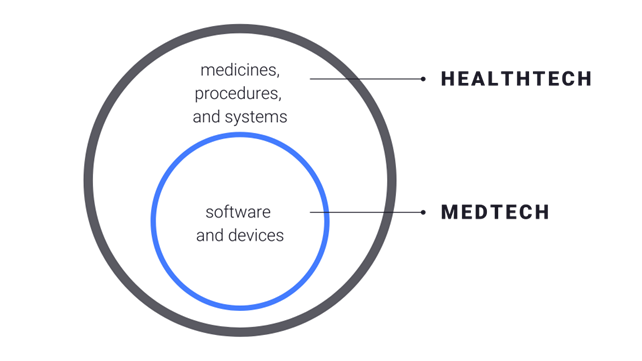
HealthTech and MedTech: digital strategies to follow
Both domains are in a perpetual state of evolution, presenting fresh opportunities for facilities, professionals, and patients alike. Let’s delve deeper into some of the most captivating innovations that doctors embrace to adapt and refine their strategies.
Telemedicine: new opportunities for care
Telemedicine and remote patient care extend the reach of medical services far beyond traditional settings, unlocking new opportunities for those who seek qualitative care.
Telemedicine, a trailblazing component of HealthTech, helps professionals work out new care strategies. Online consultations between patients and medical professionals remove geographical barriers and time constraints. Thus, expert medical assistance becomes accessible to people living in remote areas. This also offers opportunities for individuals seeking immediate attention without the need to commute. Telemedicine is a prime example of patient-centricity in healthcare.
RPM, in turn, redefines personalized health management. Wearables and connected sensors help people to monitor their health parameters, while doctors can remotely access this data to monitor the progress and assess patients’ conditions. Thanks to this, experts can intervene in time, which reduces the risk of complications. The synergy of HealthTech and MedTech digital strategies in RPM encourages people to take an active role in their well-being.
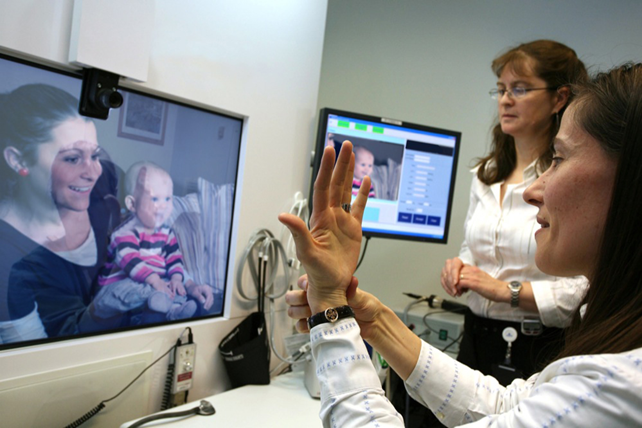
Unlocking new opportunities with AI
AI amplifies diagnostics strategies, providing rapid and precise analysis of medical images, patient data, and diagnostic trends.
AI quickens the interpretation of complex medical images, thereby augmenting healthcare professionals’ work. Smart technology examines X-rays, MRIs, and CT scans through intelligent algorithms and DL models, identifying subtleties that may go unnoticed by humans. This increases precision, lowering the possibility of errors and resulting in early interventions.
Beyond medical images, AI delves into patient data, detecting intricate patterns that could remain hidden in vast datasets. This not only aids in diagnosing specific conditions but also helps detect risk factors that might contribute to illnesses. The result is a personalized approach to healthcare, with improved outcomes and fewer adverse effects.
The integration of AI in diagnostics facilitates the tracking of trends on a larger scale. By analyzing data from multiple cases, it identifies emerging patterns and potential outbreaks, empowering healthcare systems to act immediately. Thus, patient care is significantly improved and diseases are detected and contained early.
Precision medicine: strategies for personalized care
Precision medicine redirects focus away from a generic approach towards personalized medical interventions and treatments that hinge on individual genetics, lifestyle, and health data.
Central to this innovation are cutting-edge MedTech advancements and robust software solutions. Leveraging genetic sequencing, AI-fueled data analysis, and wearable devices, healthcare practitioners gain insights into an individual’s distinctive genetic composition and health trends. This understanding presents avenues for tailored treatments that not only address existing conditions but also proactively mitigate potential risks rooted in an individual’s genetic predisposition.
The fusion of genetic insights and health data goes beyond mere treatment plans; it helps to secure efficient strategies for disease prevention. Aware of genetic susceptibilities and lifestyle factors, experts can guide patients toward proactive measures that minimize the risk of developing serious conditions. Wearables monitor vital signs, exercise routines, and other health metrics, creating a dynamic feedback loop that empowers patients to actively manage their health.
Precision medicine also helps to optimize medication strategies and dosages. By accounting for a person’s genetic factors, health history, and reactions to treatment, it helps doctors to fine-tune prescriptions, reducing adverse reactions and improving the efficacy of medications.
Powerful wearables: new opportunities for self-control
With wearable devices, doctors have made the idea of continuous health monitoring a reality. They are integrated into our daily routine, enhancing our well-being. Wearables empower individuals by providing real-time insights into their physiological state, including heart rates, sleep patterns, glucose levels, and stress indicators.
Through the continuous collection and analysis of data, wearables can recognize deviations from the norm. This prompts timely alerts to both users and medical staff, ensuring that potential issues are addressed long before they escalate into serious concerns.
A vast pool of health information generated by wearables offers immense opportunities for medical research, disease trend analysis, and even public health initiatives.
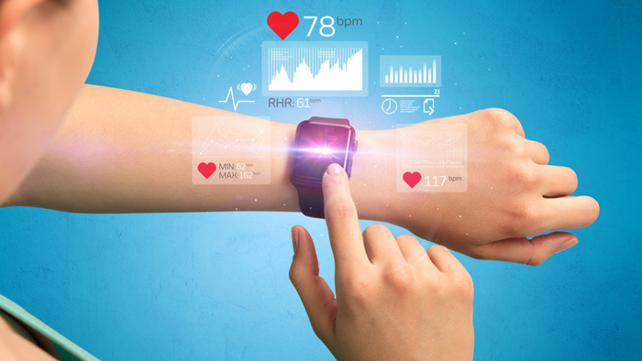
Stepping into healing realms with virtual reality
VR has long transcended the boundaries of entertainment, finding its niche as a therapeutic tool that positively affects both the mind and body. With it, the opportunities in therapy and rehabilitation are immense. People suffering from mental health conditions, phobias, and physical injuries benefit from the immersive experiences it offers.
VR simulations create a safe environment for exposure therapy, helping people to confront their fears and anxieties in a monitored and gradual manner. People can navigate their emotional landscapes with guided support and confidence and confront their triggers.
With VR, doctors can create new strategies for physical rehabilitation. Individuals with injuries or disabilities embark on immersive journeys that not only enhance their engagement with therapy but open opportunities for quick recovery. VR environments challenge patients to rebuild motor skills, improve coordination, and regain strength, all while enveloped in captivating scenarios that make rehabilitation less arduous and more engaging.
This technology also addresses phobias and ensures enhanced stress management.

Enhancing HealthTech and MedTech opportunities with blockchain
Blockchain has proven efficient in the FinTech sector. That’s why businesses across industries see opportunities in it, introducing blockchain in their processes. Healthcare has also adopted this technology. Blockchain is rewriting the rules of data security, offering a robust framework for the secure and seamless sharing of sensitive patient information among medical facilities.
Authorized entities can securely store, access, and share patient records, medical histories, and treatment plans.
The introduction of blockchain in MedTech and healthcare solutions ushers in immense opportunities for interoperability. The traditionally siloed landscape of medical data gives way to a cohesive ecosystem, where clinics, hospitals, laboratories, pharmacies, and even patients can access and update information with ease. This level of fluidity translates into more informed medical decisions, enhanced workflows, and impressive patient outcomes.
Each piece of information added to a blockchain is encrypted and linked to previous data through cryptographic hashes. This method guarantees that records are unchangeable and secure, preventing unauthorized access and data breaches.
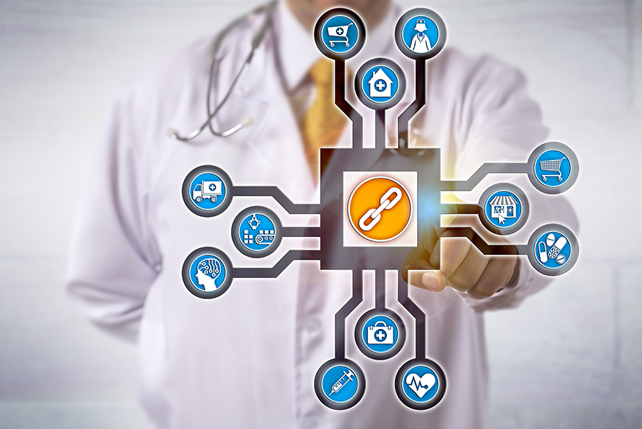
Genome editing and CRISPR
Gene editing technologies help experts to create new strategies for the treatment of genetic disorders.
CRISPR-Cas9 allows scientists to precisely edit the DNA within living organisms. This has ignited a spark of hope for individuals grappling with genetic conditions that were once deemed untreatable. Editing defective genes that cause disorders opens up opportunities for individualized gene therapies.
The potential applications of CRISPR-Cas9 extend across the spectrum of genetic disorders. From rare conditions with no available treatments to more common disorders, gene editing is like deciphering and rewriting the code of life itself. The treatment potential transcends medicine; it’s an intricate fusion of technology and biology, opening up possibilities once seen as science fiction.
However, gene editing is a balance between potential and ethical considerations. The same power that could offer solutions also demands rigorous ethical frameworks to navigate the complexities of genetic manipulation. As MedTech and IT pioneers explore these frontiers, conversations on responsible innovation become pivotal.
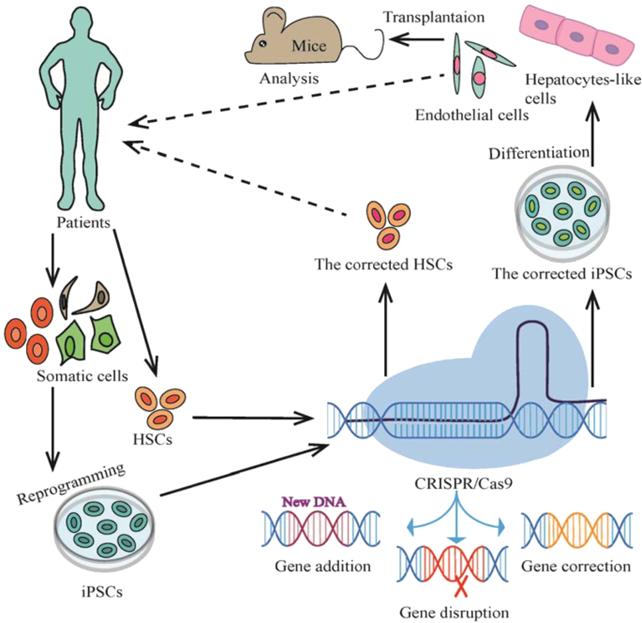
Precision in motion:
One of the most impressive innovations in MedTech is robot-assisted surgery. By seamlessly integrating robotic systems, it pushes the boundaries of medical expertise in surgical procedures.
Surgical robots offer impeccable precision. They take operations to an entirely new level. Sophisticated systems extend surgeons’ capabilities, offering an array of articulated instruments that can navigate intricate anatomical structures with unparalleled dexterity. The outcome is an increased level of precision that exceeds human potential, enabling the execution of intricate procedures with ease and assurance.
In the realm of MedTech, ingenious minds craft cutting-edge robotic systems that offer immediate feedback, enhancing the decision-making process and magnifying the proficiency of surgeons. Additionally, the procedures’ minimally invasive nature results in smaller incisions, diminished blood loss, and expedited recovery periods – collectively contributing to heightened patient outcomes.
The strategy of human/robot collaboration also bridges geographical barriers. Through teleoperation, medical experts can guide surgical procedures from afar, extending their expertise to regions with limited access to specialized healthcare.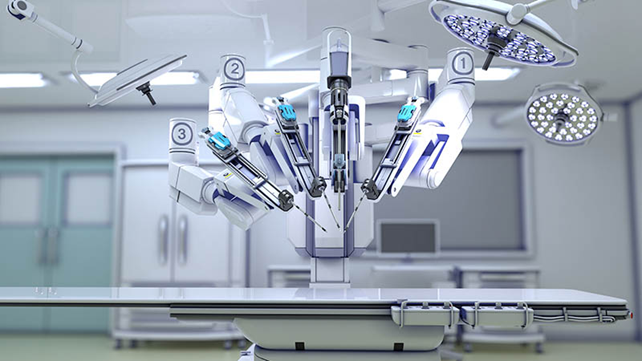
The IoT revolution
Spanning wearable sensors to hospital apparatus, IoT devices establish a cohesive network fueled by data-derived insights. Tracking vital signs, collecting health metrics, and promptly transmitting this information to medical professionals in real-time, these devices enable physicians to render timely assessments, remotely oversee patient advancement, and intervene as necessary — ultimately enhancing patient outcomes.
In addition to patient care, the influence of IoT extends to the realm of inventory management in healthcare facilities. Through intelligent sensors and interconnected devices, the monitoring of medical supplies, medications, and equipment utilization takes on a new dimension. This vigilance guarantees efficient resource deployment and replenishment, thereby fostering streamlined operations, minimized wastage, and an agile method of supply management for institutions.
Insights into patient flow, bed occupancy, and equipment utilization are gleaned from the real-time data produced by IoT devices. With reasonable resource allocation, administrators not only elevate patient care but also fine-tune operational efficiency for optimal outcomes.
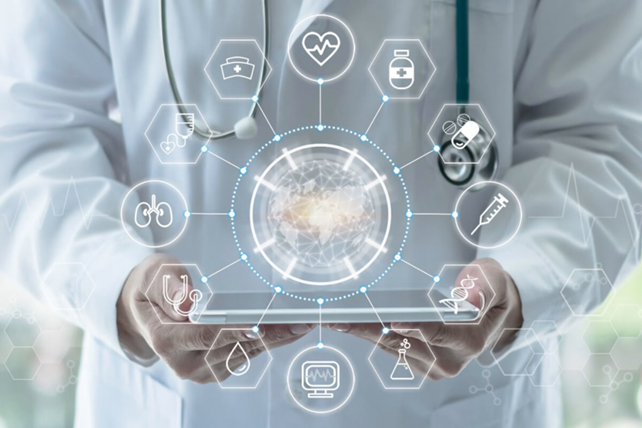
Forging new frontiers: bioprinting and organ regeneration
Bioprinting and organ regeneration – this sounds like a scientific marvel. But professionals are already using these striking innovations. 3D printing technologies rewrite the narrative of organ transplantation, offering a beacon of hope for patients in need.
Intricate human tissues and organs are created layer by layer. This transformative approach is not just about replicating the structure; it’s about constructing functional tissues that can replace damaged organs.
The implications of bioprinting are vast and profound. It’s a realm where MedTech and HealthTech join forces to address the dire shortage of organ donors, making organ transplantation timely and more accessible.
These innovations also secure advanced research strategies. By creating bioprinted tissues and organs, scientists gain platforms for drug testing, disease modeling, and understanding complex physiological processes.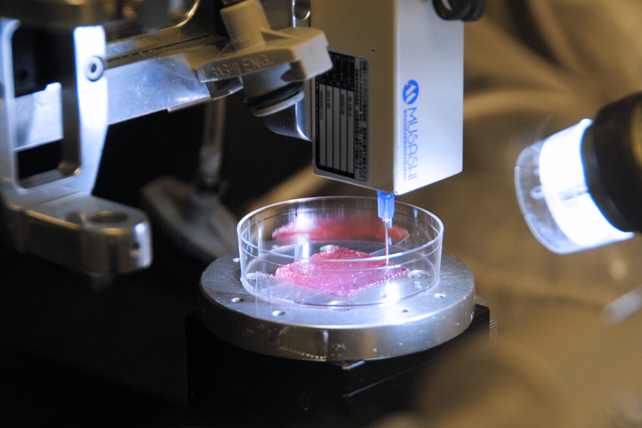
Conclusion
Medical facilities and MedTech organizations cooperate with IT companies offering custom healthcare software development services to create entirely new healthcare. Hospitals and clinics elaborating complex MedTech growth strategies provide care that exceeds conventional approaches. We’re moving towards a future where medical services are tailored, accessible, and shaped by the harmonious blend of individual care and technological advancement.

Valentin Kuzmenko is the Chief Commercial Officer/ VP of Sales at Andersen and works in close cooperation with customers to define, craft, and improve high-performing software solutions across numerous industries


